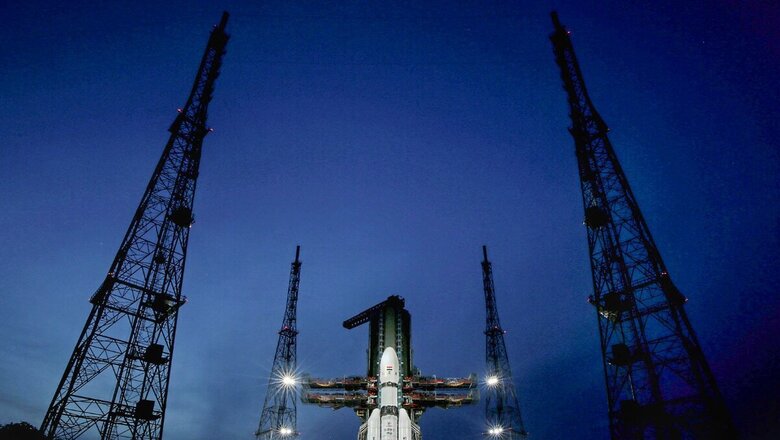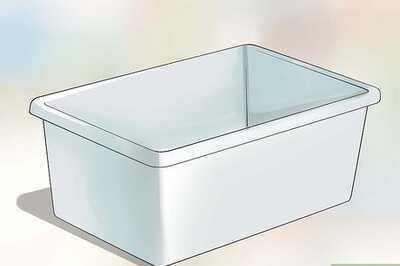
views
Scientists from the Indian Space Research Organisation (ISRO) carried a miniature model of Chandrayaan-3 to offer prayers at the Tirupati temple on Friday as the space agency gears up to begin the launch countdown at 1pm.
The Chandrayaan-3 mission is slated to be launched at 2.35pm onboard a Launch Vehicle Mark 3 (LVM3) from the spaceport of Sriharikota on July 14. It will be a follow-up mission after the crash-landing of Chandrayaan-2 in September 2019 due to a software glitch.
#Watch A team of ISRO scientists arrive at Tirupati Venkatachalapathy Temple, with a miniature model of Chandrayaan-3 to offer prayers#chandrayaan3 #india #isro #space #news pic.twitter.com/kmBGsO0tXk— News18 (@CNNnews18) July 13, 2023
According to ISRO Chairman S Somanath, while Chandrayaan-2 had a success-based design, Chandrayaan-3 has a failure-based one.
“We expanded the area of landing from 500m x 500m to four km by 2.5 km. It can land anywhere, so it doesn’t limit you to target a specific point. It will target a specific point only in nominal conditions. So, if the performance is poor, it can land anywhere within that area,” Somanath said.
On Monday, he shared minute details about what went wrong with the Vikram lander of Chandrayaan-2 as it went hurtling down towards the identified 500m x 500 m landing spot on the lunar surface with the engines designed to reduce its velocity developing higher thrust than expected.
“The primary issues were, one we had five engines which were used to give the reduction of the velocity, which is called the retardation. These engines developed higher thrust than what was expected,” he told reporters.
Somanath said that when such a higher thrust was happening, the errors on account of this differential were accumulated over some period.
“All the errors got accumulated, which was on the higher side than what we had expected. The craft had to make very fast turns. When it started to turn very fast, its ability to turn was limited by the software, because we never expected such high rates to come. This was the second issue,” the ISRO chief said.
He said the third reason for failure was the small 500m x 500m site identified for landing the spacecraft.
Chandrayaan-3 is also said to have more fuel so that it has more capability to travel or handle dispersion or move to an alternate landing site.
The ISRO chief said the Vikram lander now has additional solar panels on other surfaces to ensure that it generates power no matter how it lands.
“We asked if it lands with higher velocity, what will happen? Can it not land? Then we increased the vertical velocity component from 2 m/s to 3 m/s and tested it totally,” he said.



















Comments
0 comment